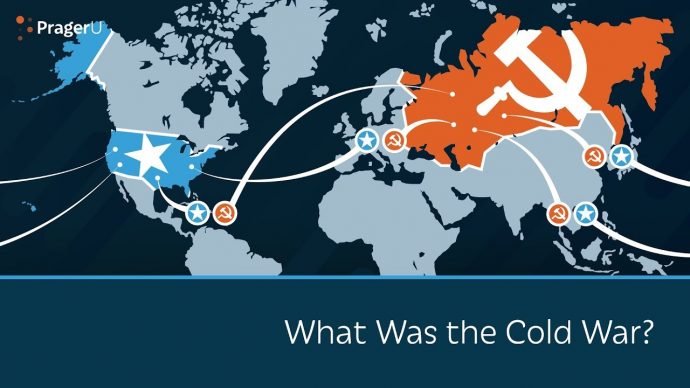Here is the intro to a new video from Prager University that explains the Cold War:
The decades-long “Cold War” (1947-1989) between the United States and the Soviet Union was so named because the two global powers never came to direct blows. Yet, the war was not without its victims. In fact, millions of Cubans, Koreans and Vietnamese suffered under Communist tyranny. In this video, Renowned British historian Andrew Roberts explains why “The Cold War” could just as easily be called “The Third World War.”
From the end of World War II, the United States and its Western European allies were involved in a nearly half-century long, titanic struggle with the Soviet Union known as “the Cold War.”
It was cold only in the sense that the Russians and the Americans never came to direct blows.
But it was certainly not cold for the Cubans, Koreans, Vietnamese, and others who got caught up in the Communists’ relentless drive to destabilize the free, democratic, capitalist world.
There were, to be sure, many morally complex moments during this long struggle, but the Cold War was, at its core, as clear a conflict of good versus evil as World War II had been. Just like that war, the Cold War was a death match between the forces representing freedom and the forces representing totalitarianism.
Because hundreds of thousands—perhaps millions—died in it, the Cold War can, with good reason, be described as ‘the Third World War.’
The instigator of this war was Josef Stalin, the mass-murdering dictator of Russia and of the many non-Russian peoples he had incorporated into what was known as the Union of Soviet Socialist Republics, or Soviet Union for short.
Stalin knew that his Soviet armed forces could not take on the might of the free West. Instead, he decided to wage this fight through the use of proxies, and by a massive use of disinformation and misinformation.
Read more: Prager University

